As we were still hovering around in Cape Town (waiting for truck stuff to be sorted) we took a drive to the West Coast Fossil Park via the R27 and passed the south entrance to the West Coast National Park. As we had been refused entry on the north side (Langebaan) a while back, we decided to drive in on this side.
The road is tarred and it was a pleasant drive north with the estuary and protected marine wetlands on our right and vista’s of indigenous vegetation, sand dunes and the ocean gently blending with the blue skies on our left. We stopped at Kraalbaai for a walk on the sparkling white beach with the most translucent turquoise water you can imagine. There was a stiff breeze and we could see the seagulls seeking shelter in the patches of green on the sandy beach.
A less loved puff adder was hiding halfway in the bush as we passed. Puff adders are renowned dangerous as they rather ‘play dead’ than slither away. Then, when you pass, they’ll attack from behind. Luckily we caught sight of it while driving, so we could watch it in the safety from our high and dry position in the truck.
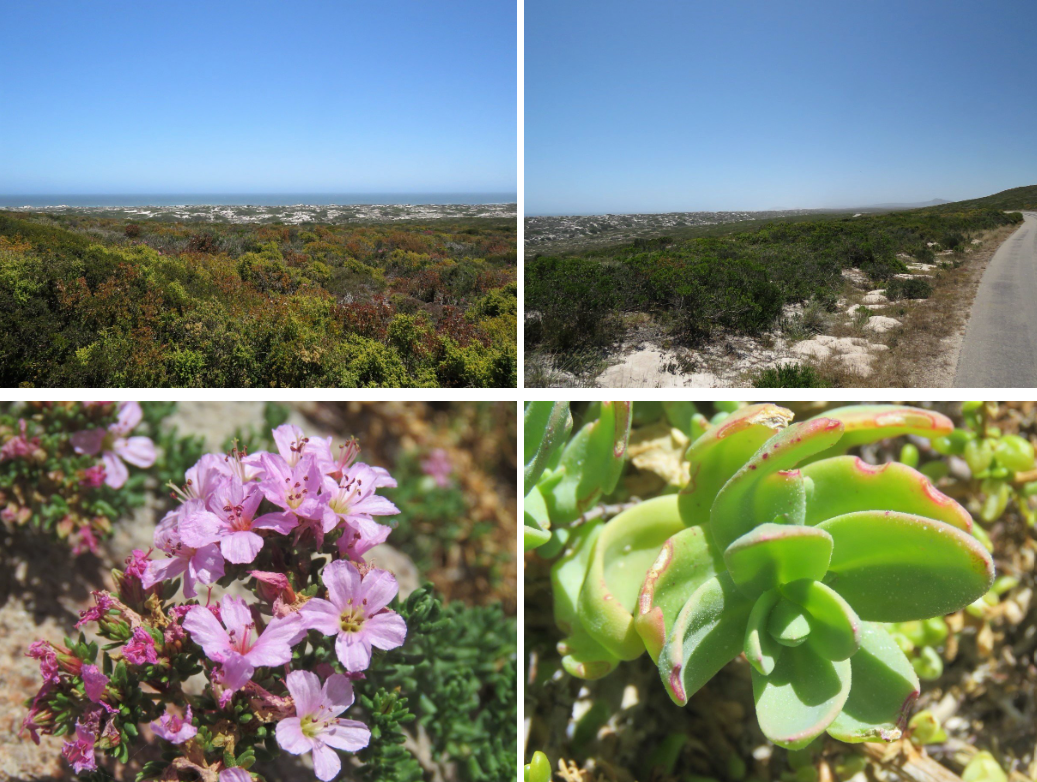
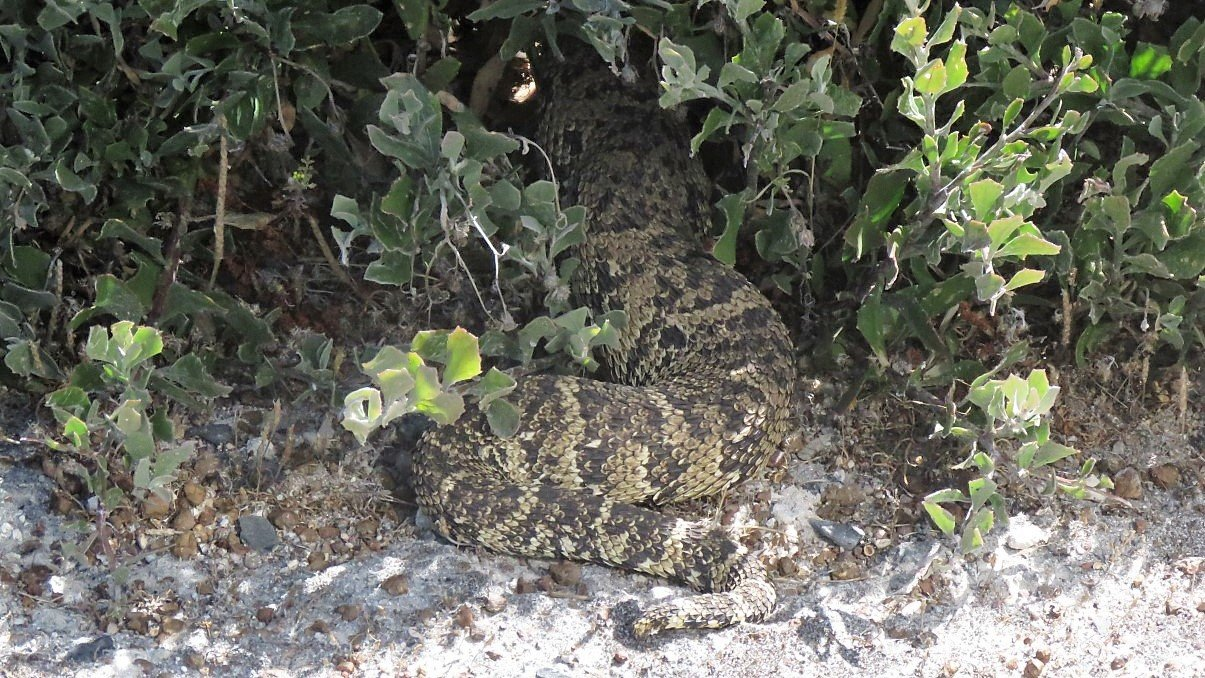
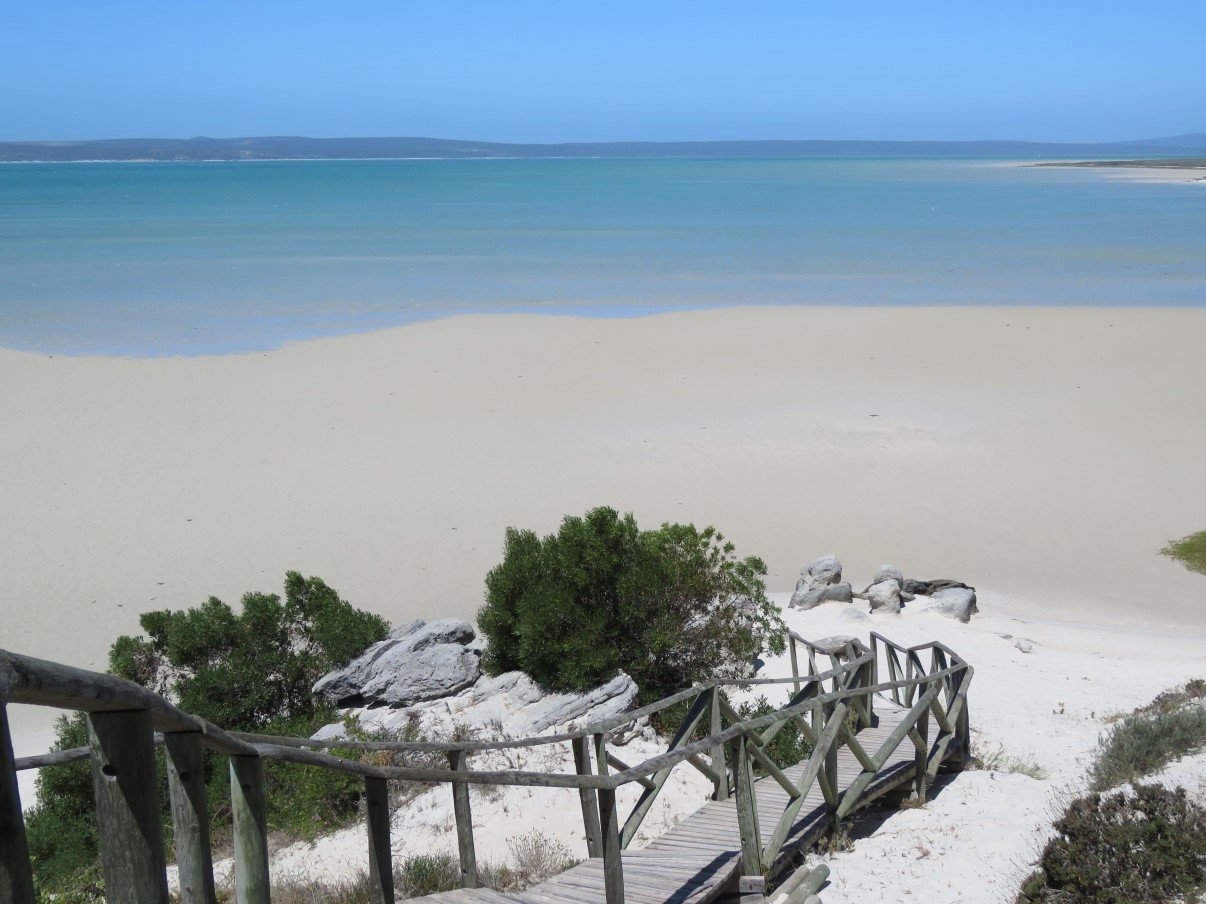
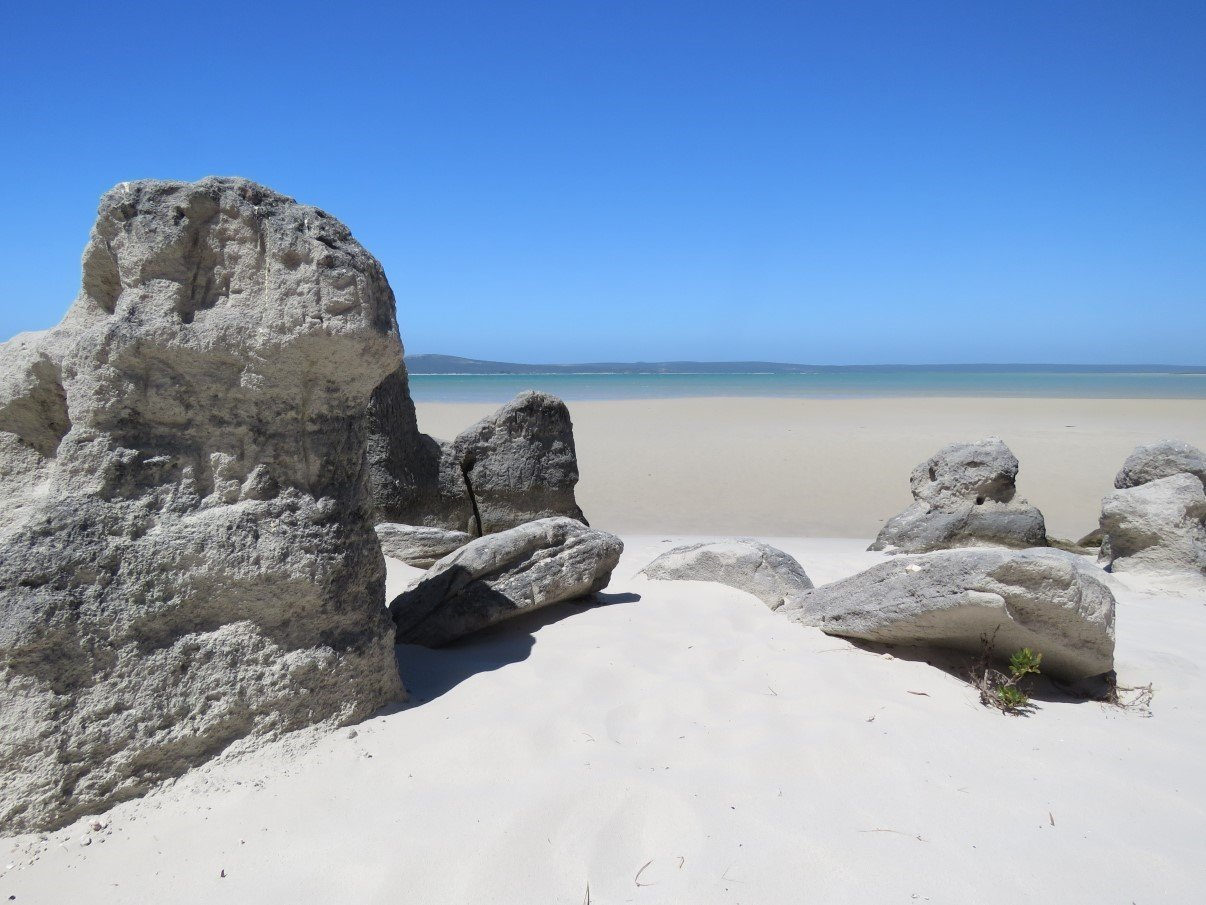
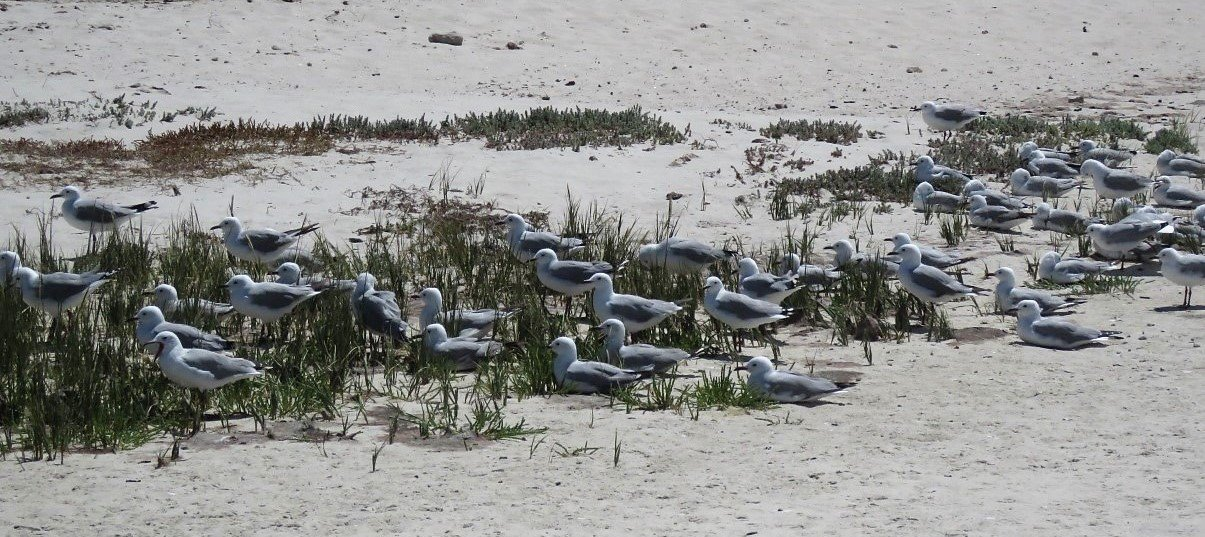
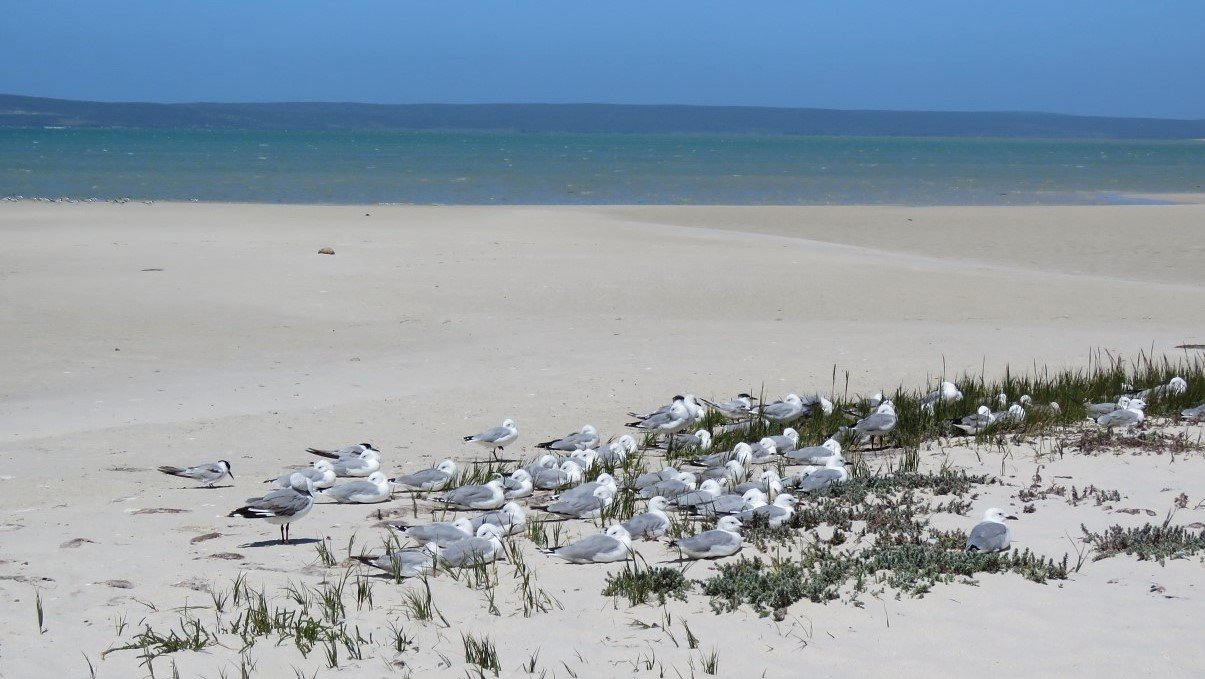
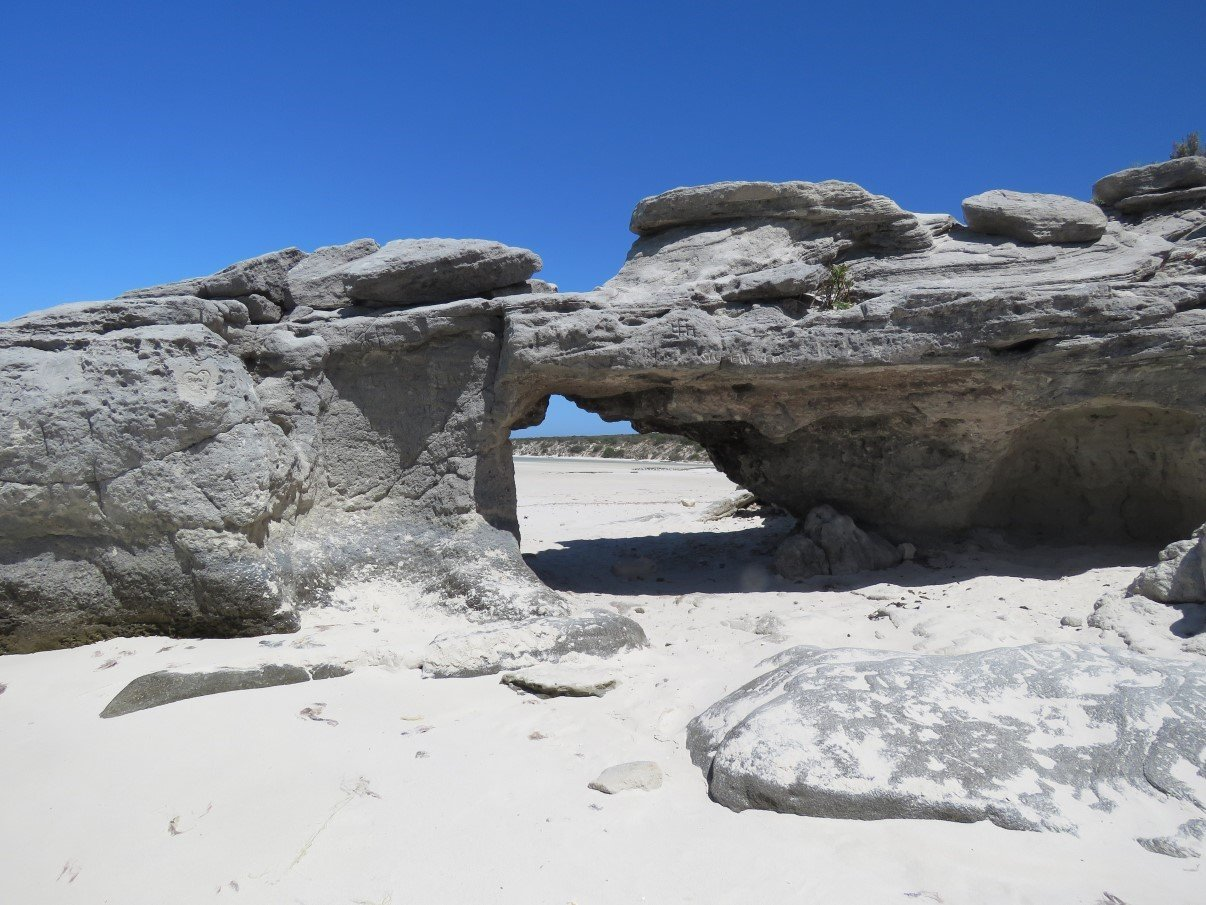 We continued to Tsaarsbank in anticipation of walking to the wreck of the Pantalis A Lemos, but unfortunately our time management stank (once again) and we have to make a plan to walk that walk again sometime in the future.
We continued to Tsaarsbank in anticipation of walking to the wreck of the Pantalis A Lemos, but unfortunately our time management stank (once again) and we have to make a plan to walk that walk again sometime in the future.
We did enjoy however witnessing the pure unadulterated force of wind and waves as the ocean battered the rocky shore in spectacular showers!
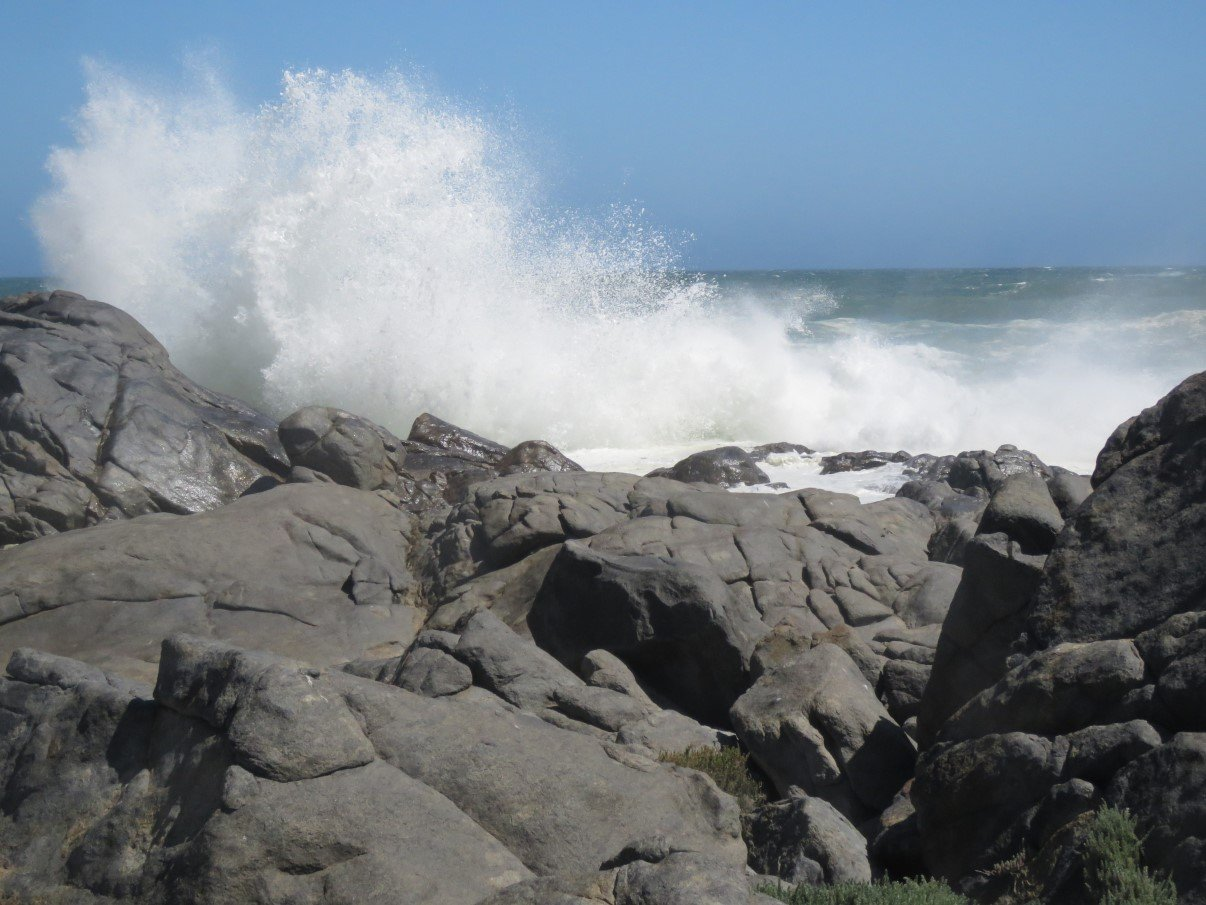
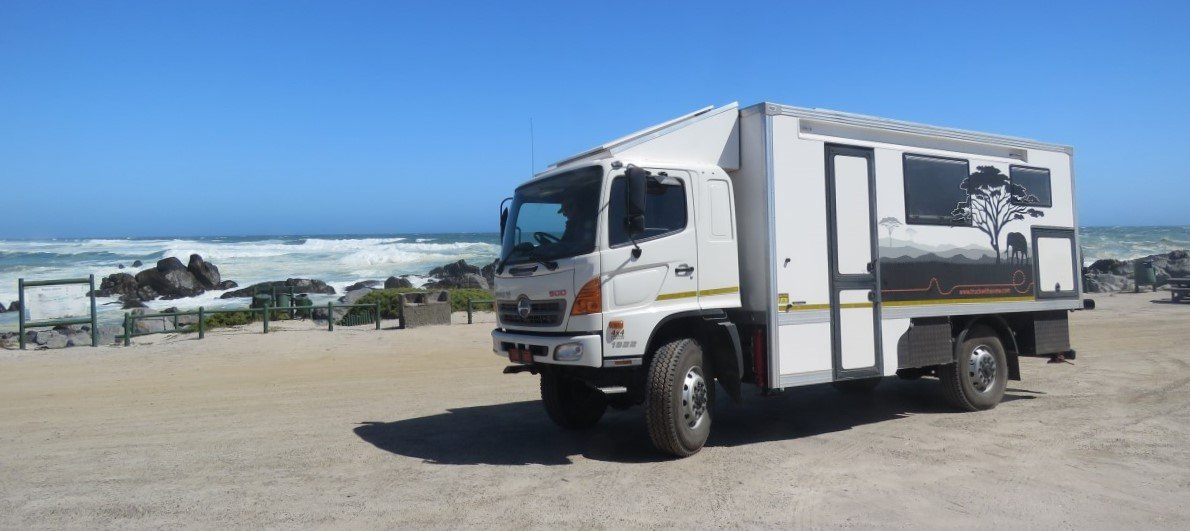
We turned south again and after turning left onto the road section going back up to Langebaan, we stopped at one of the bird hides. The wind was pumping and you can only reach the bird hide via a wooden walkway across the wetlands. As usual, Stefaan was a little bit ahead of me while I did the ‘stop & go’ thing, taking photos along the way. The vegetation of the wetlands was just beautiful like an abstract canvas with bright jewel colours alternating with the grey and white cracked patches of the dry and salty marshland.
I realised how strong the wind really was when I was almost blown off balance and off the walk way. Getting closer to the hide, I was relieved to see that the last portion of the walk way (that now crossed over open water and was even more exposed to the elements) had been covered by a double layer of shade cloth. I’m pretty sure that I might have landed up in the water if the short passage had not been protected from the wind.
Unfortunately we only saw a few flamingo’s from afar, so we walked back, this time together, with me holding Stefaan’s arm for dear life.
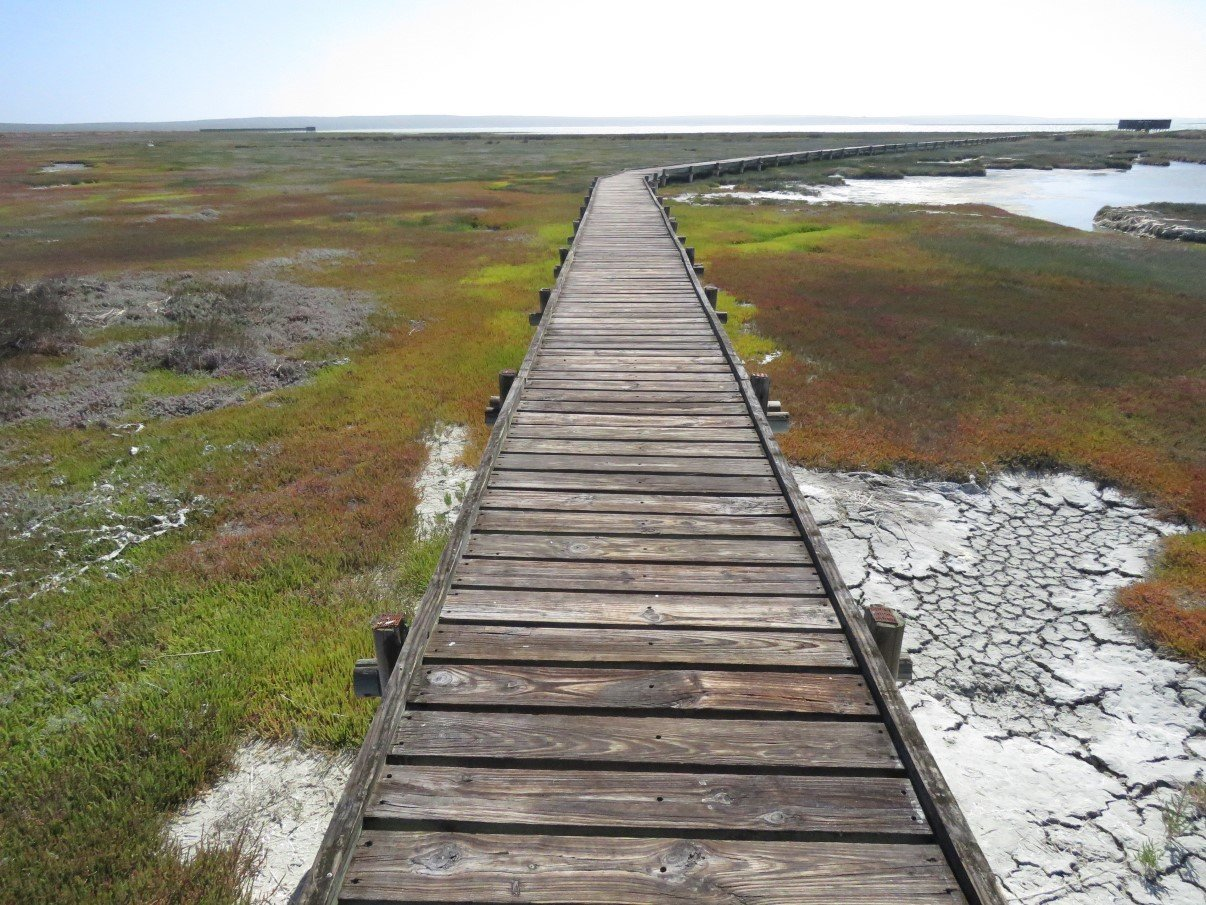
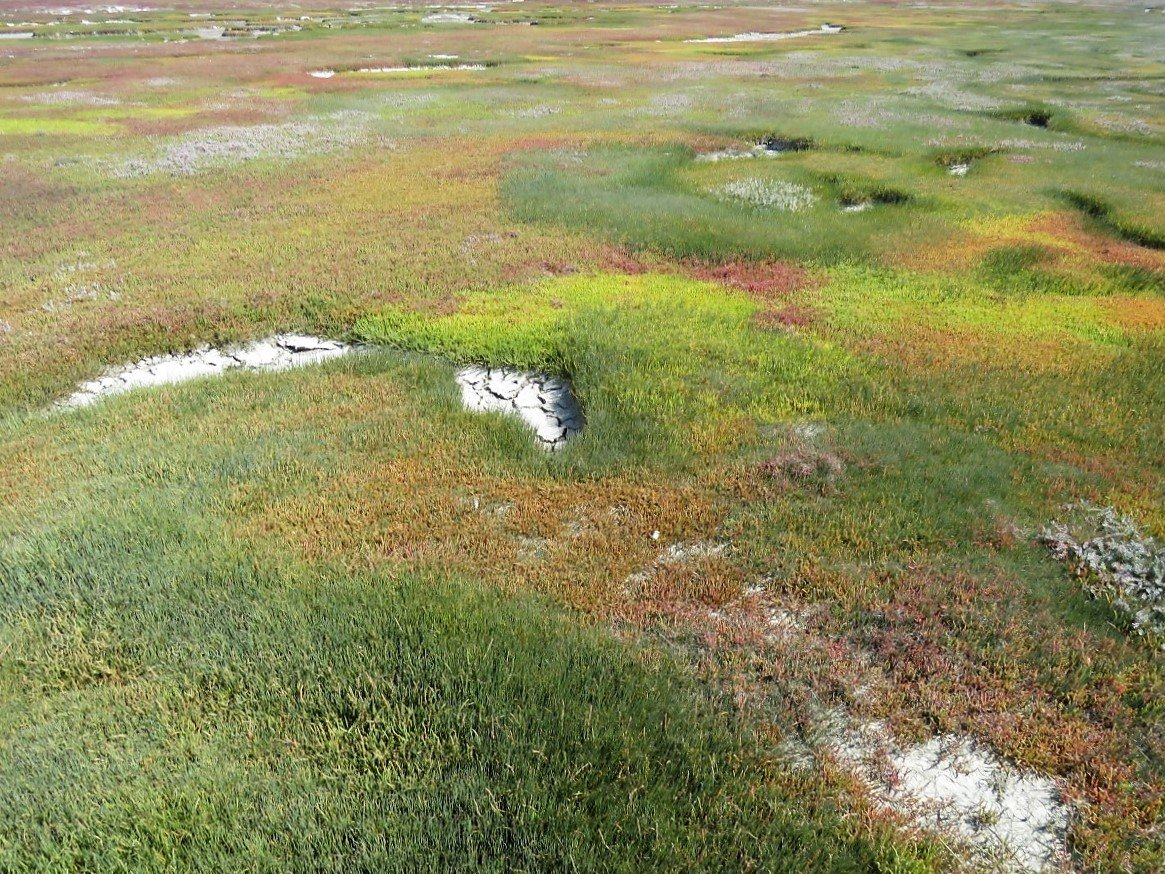
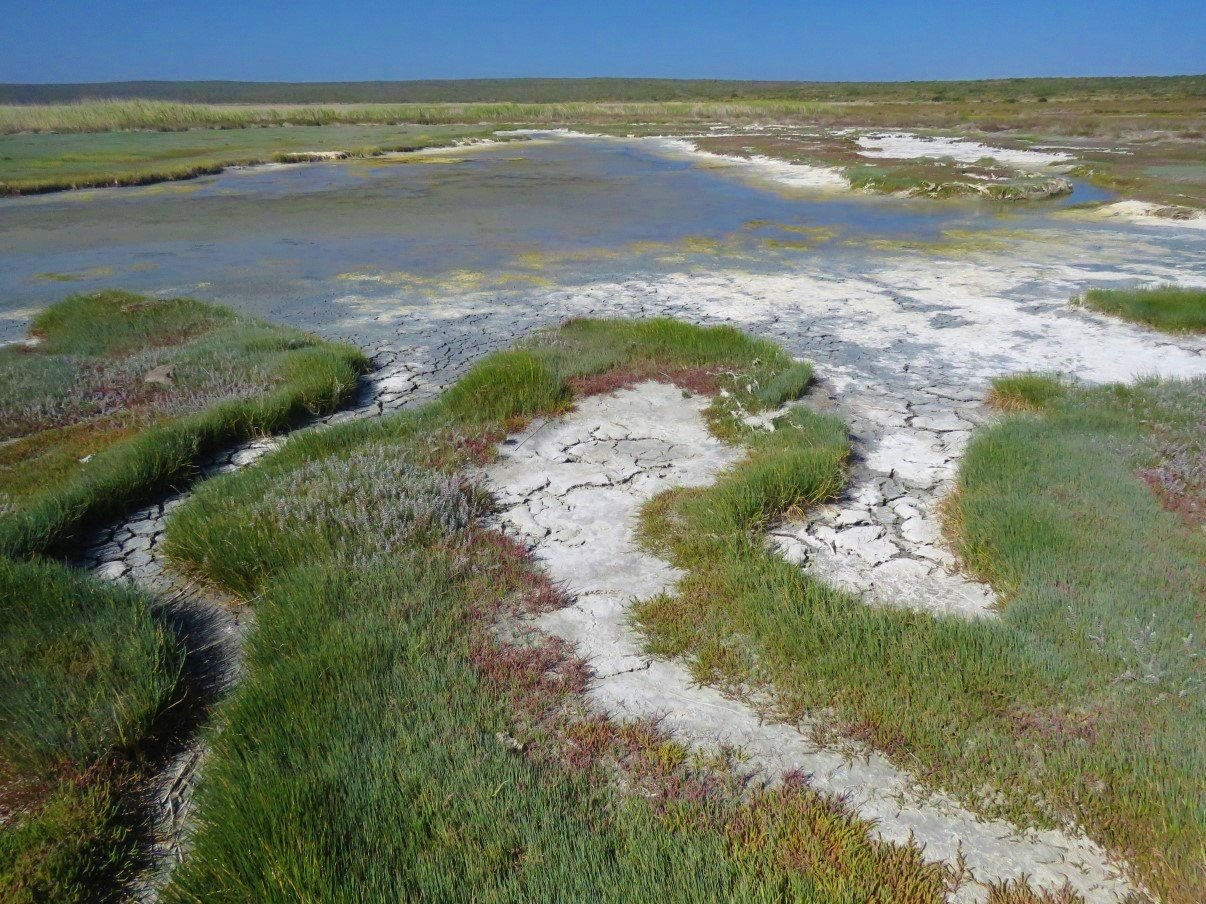
Our last stop was the Seeberg lookout point with its sweeping views over the National Park. There is a little cottage museum on top of the rock that tells more about the history of Langebaan and its communities. The cottage, in its glorious testimony of solitude, stands as a sentinel overlooking the park and guarding the stories of its past.
Walking around on the rock outside the cottage proved to be a dangerous exercise. Even Stefaan felt the force of the wind and the holding on tight applied to both of us this time.
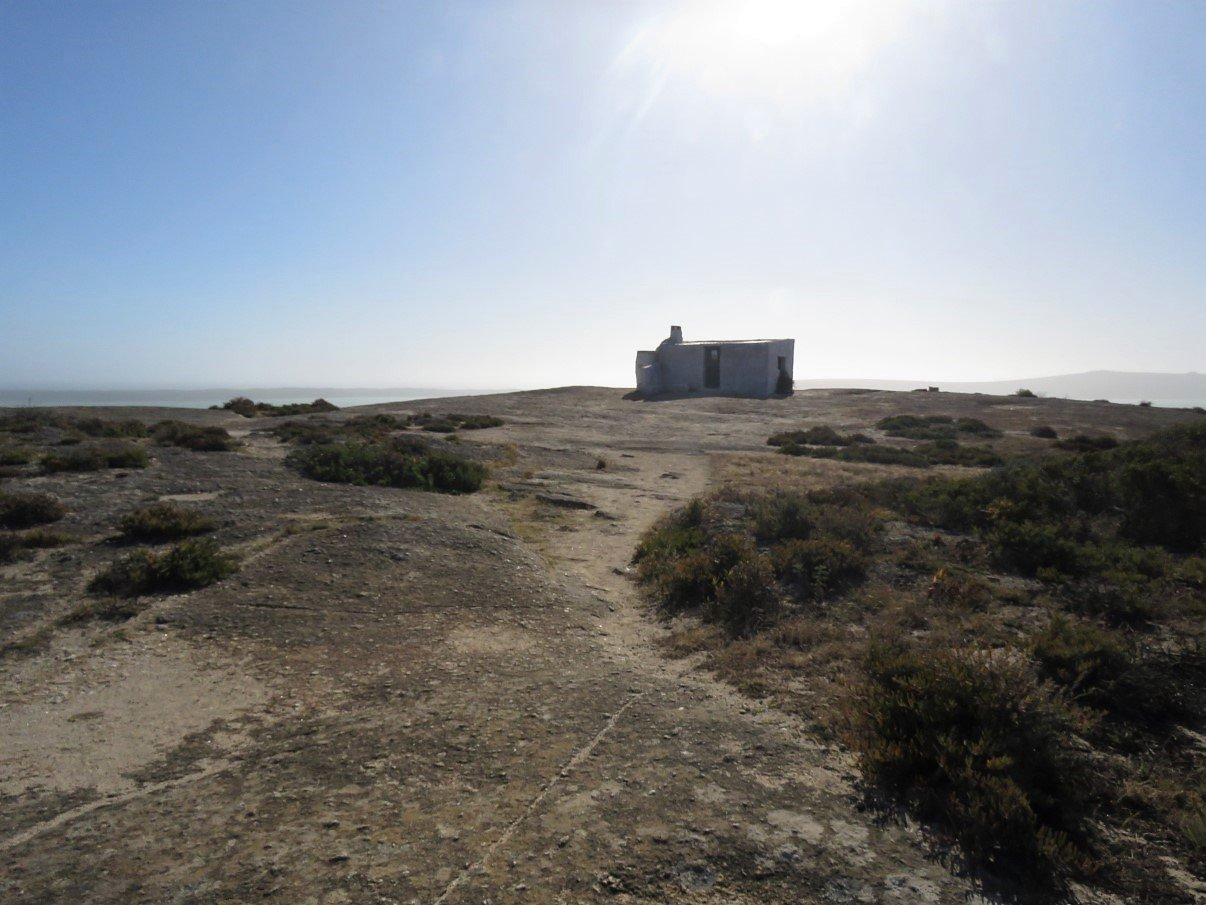
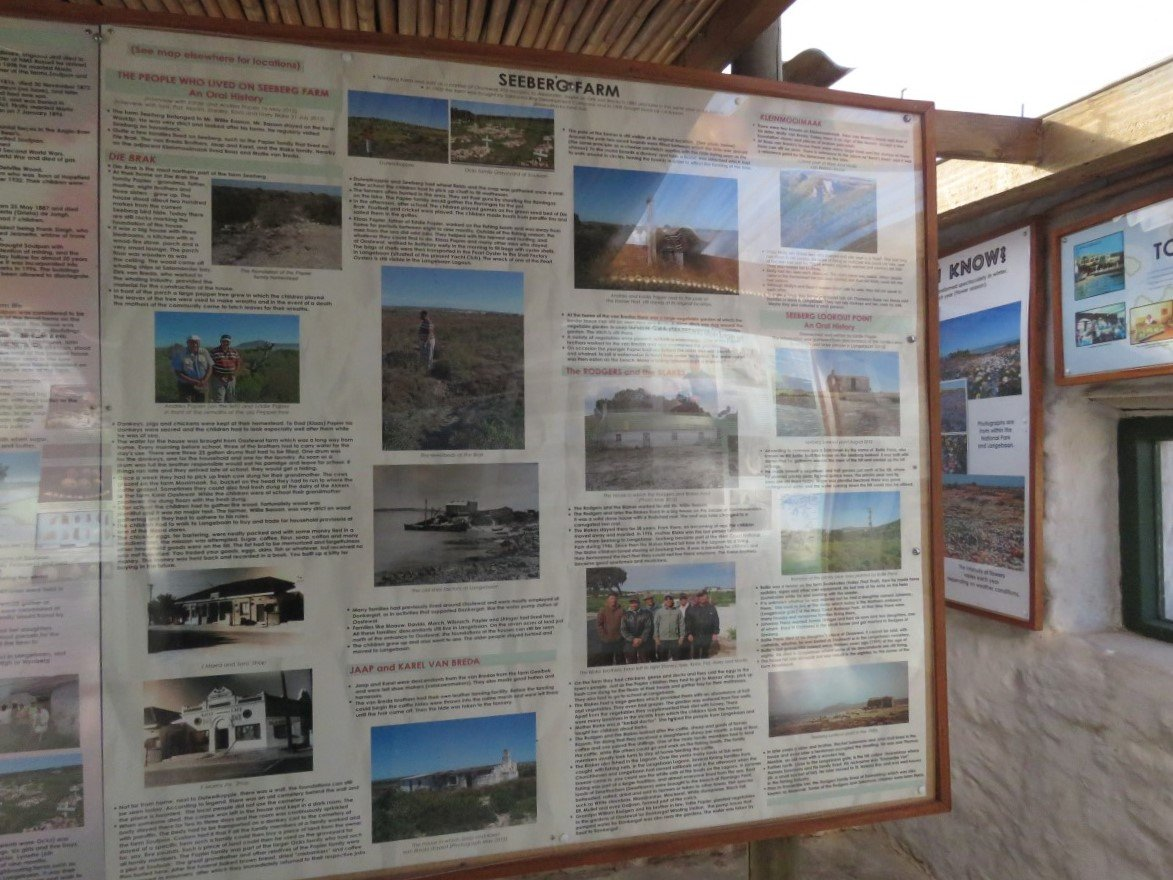
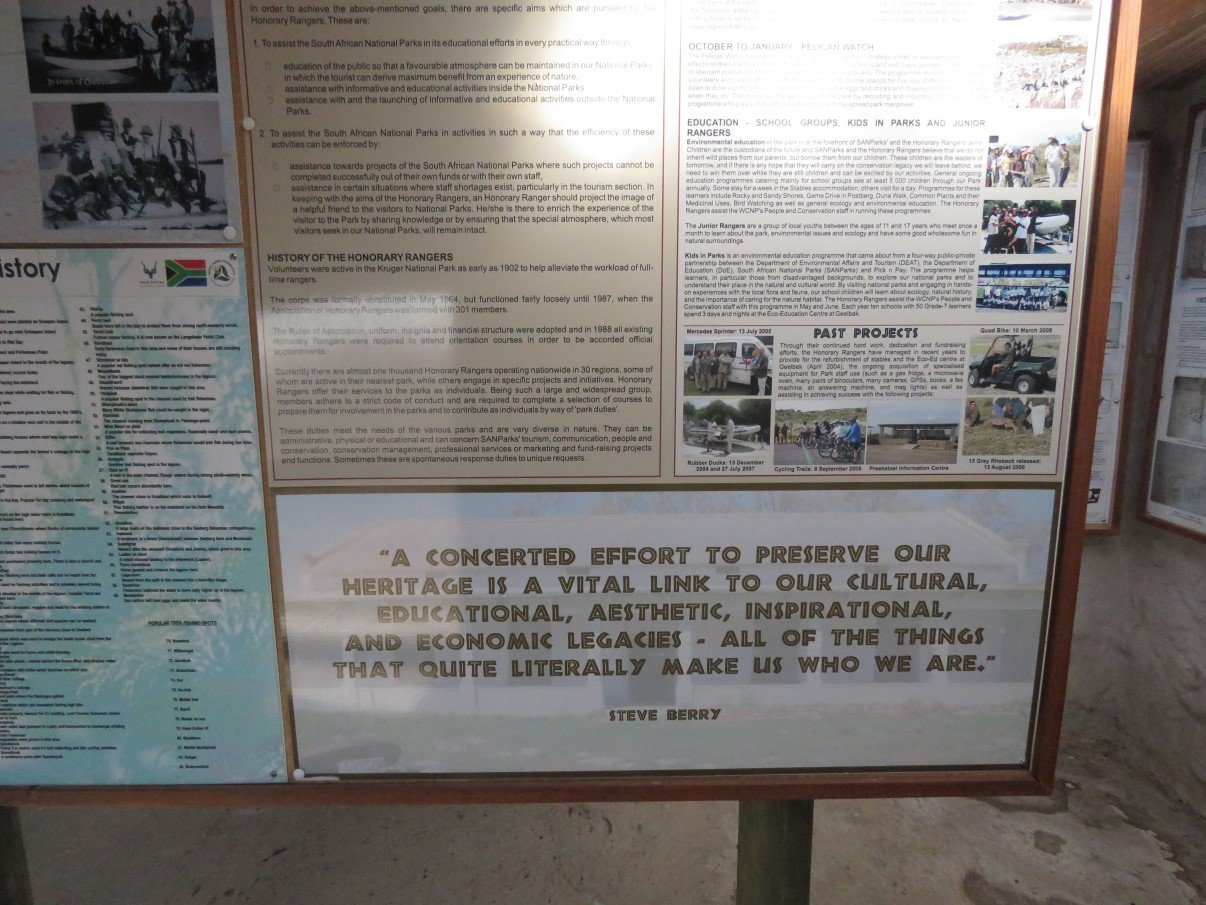
We left the park via the Langebaan exit and went looking for a place to sleep.
After a sleepover somewhere along the road, we continued to the West Coast Fossil Park, just up the road.
Our guide was chatty and knowledgeable and it was a delight walking around in the digs and visiting the museum and exhibition space. The museum seems pretty new and modern with (for me from a design point of view) very cool designs for murals, information boards and exhibits! Full points from me!
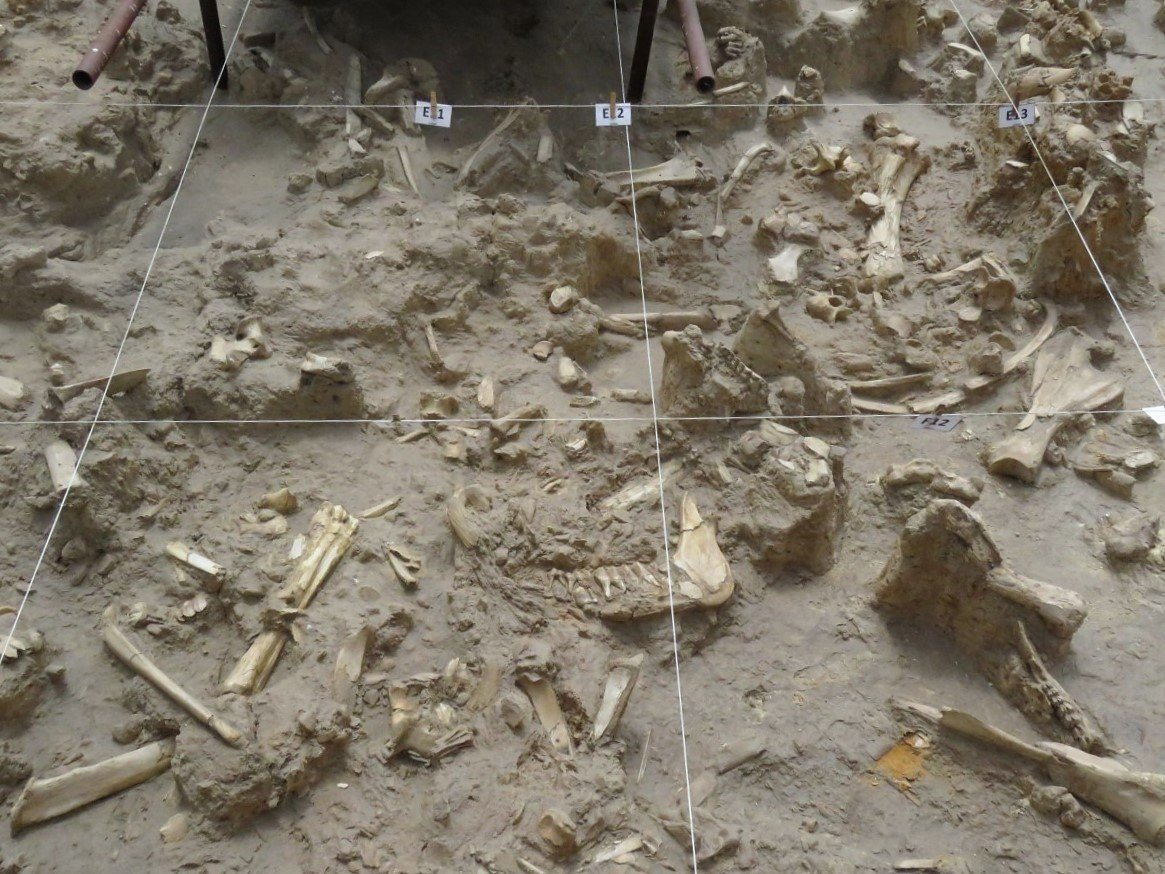
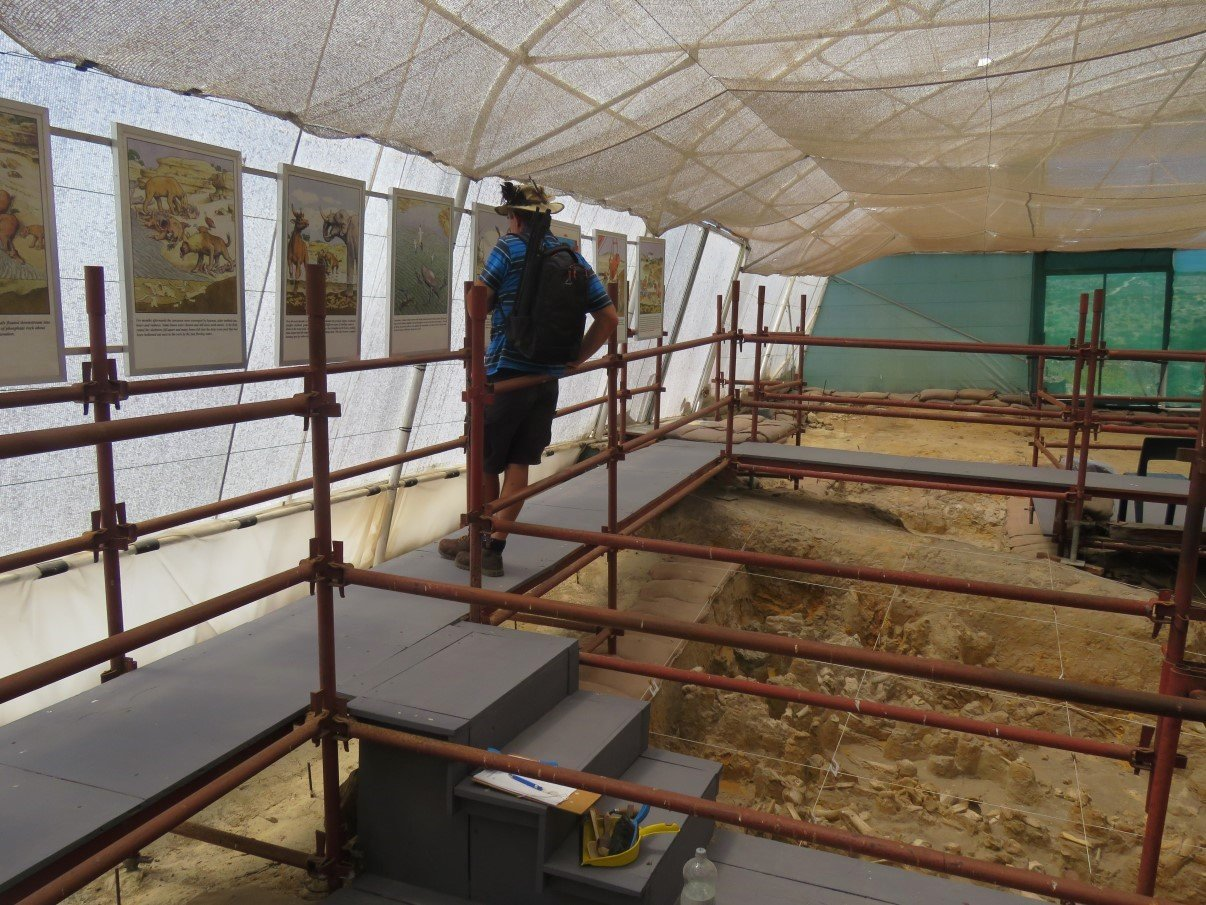
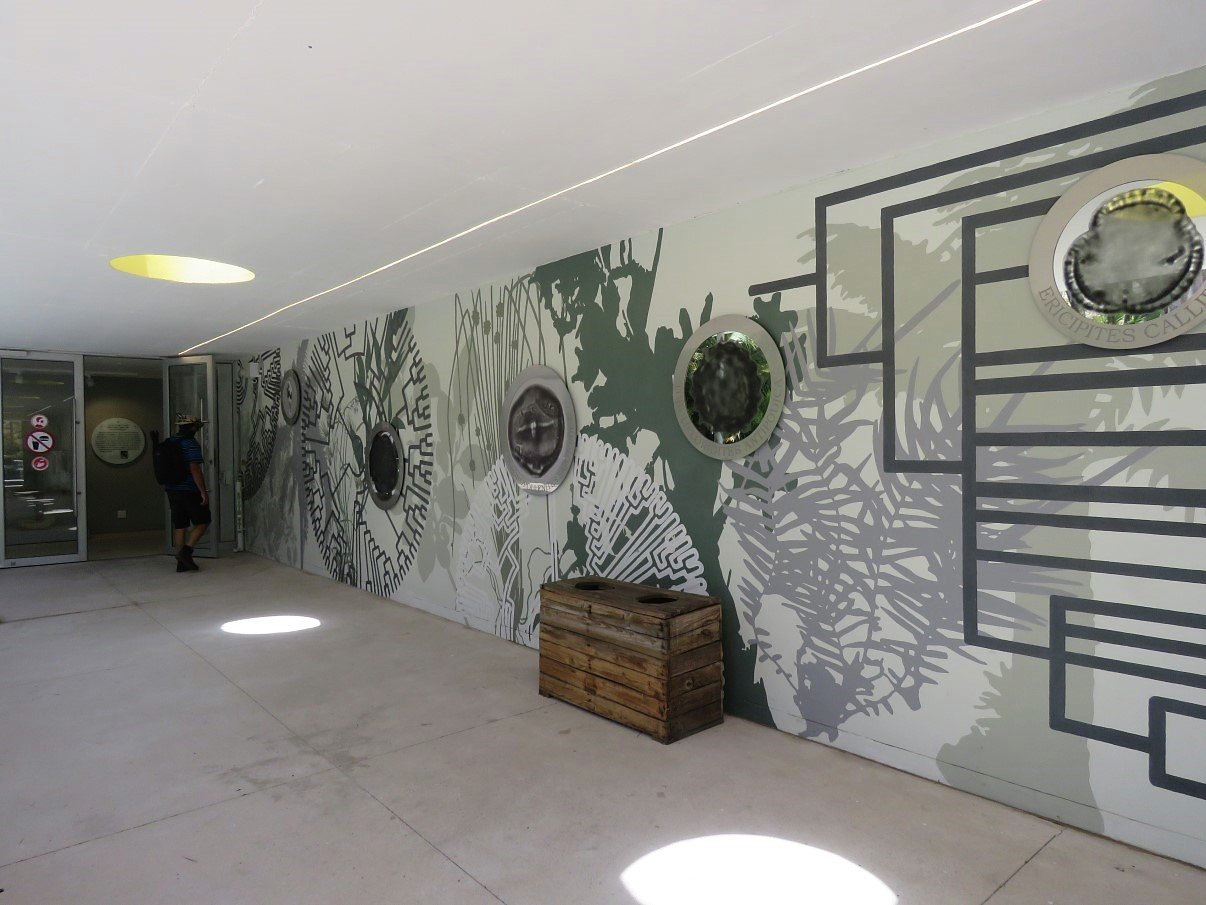
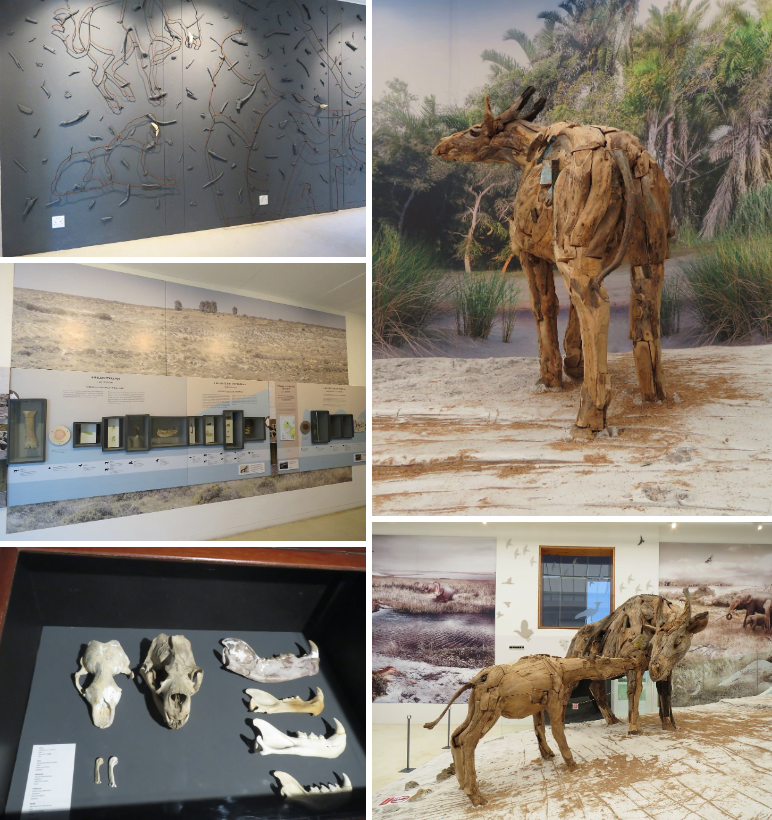
The Fossil park and museum complex is set in an colourful landscape brimming with indigenous flowers, shrubs and trees. Beautiful!
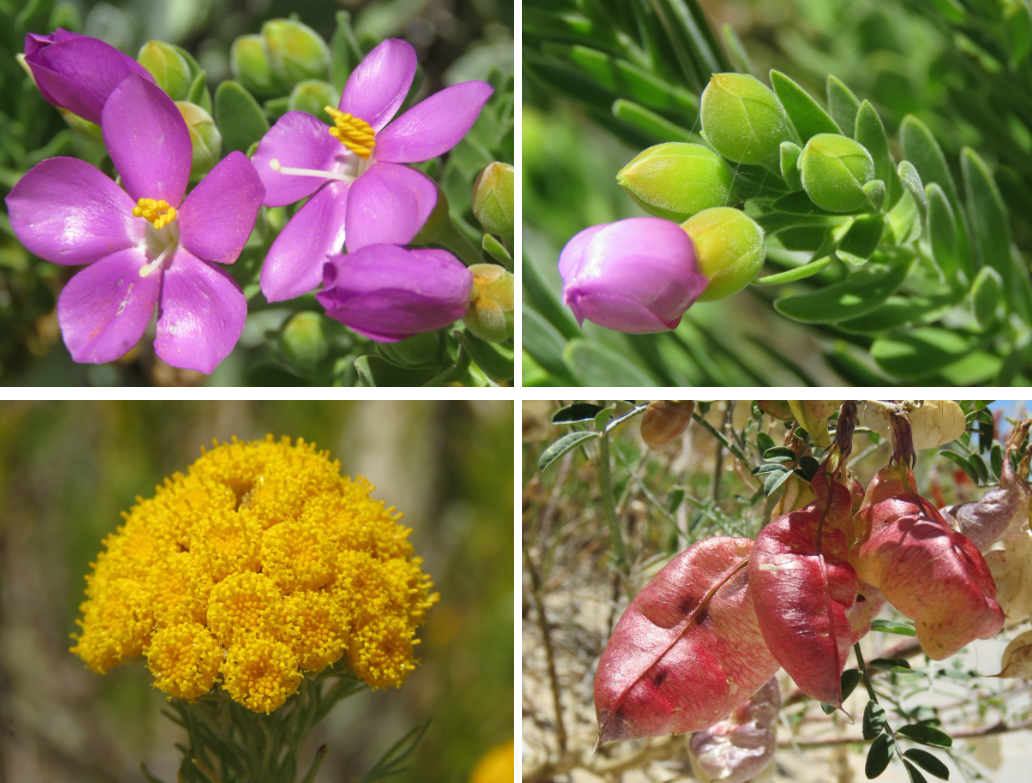
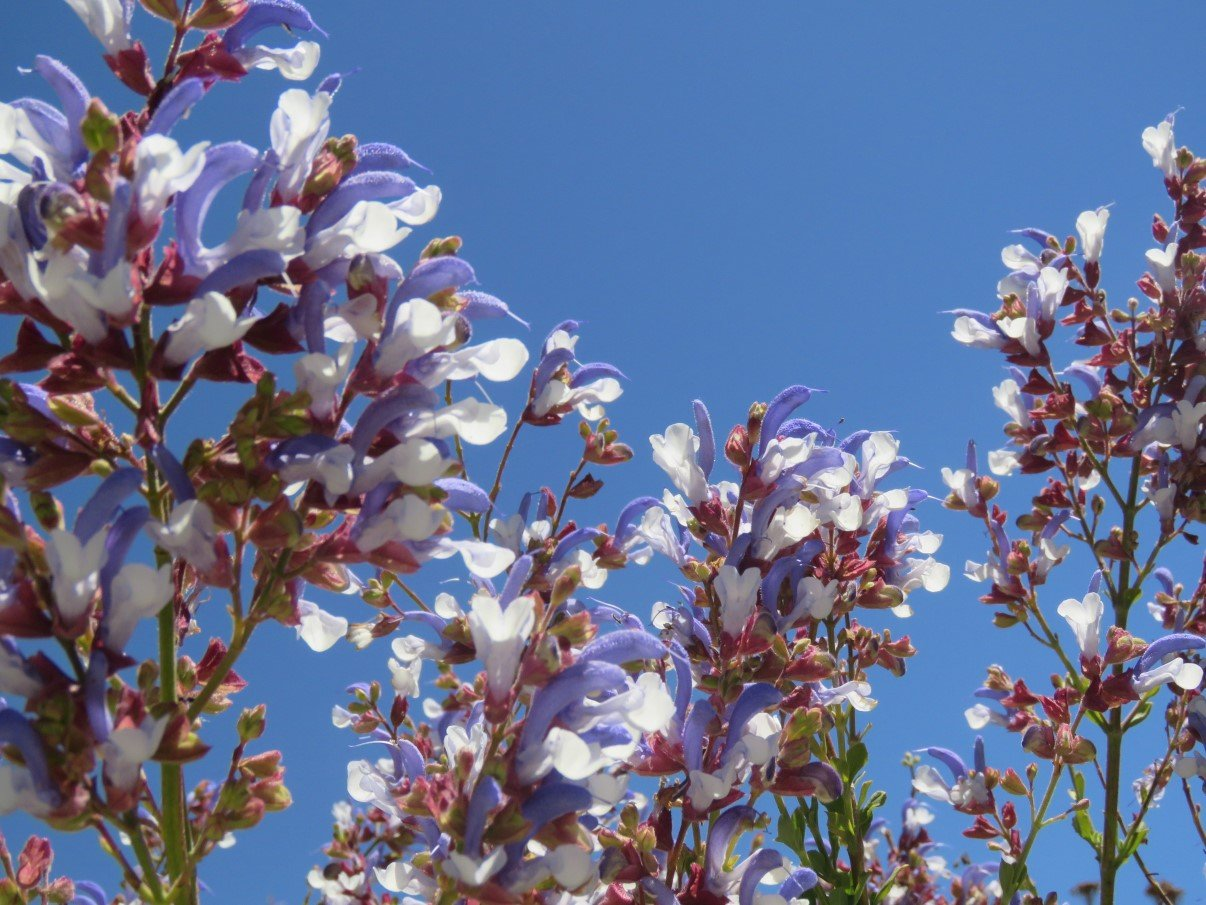
On the way back to Cape Town we took a detour via Yzerfontein, as the map showed a coastal path just outside town which would link back to the R27, further south. Seeing we always prefer the smaller roads, we went looking. We drove through town with lots of beautiful houses on a magnificent stretch of coastline and just when we thought we reached the end of town and the start of the coastal stretch we got stuck in front of a gate: a new (exclusive) development is planned and access is only for the lucky few! Obviously we didn’t fall in that category and we had to turn back.
Back on the R27, we soon enough started seeing the hazy shape of Table Mountain again: from an almost undiscernible tone difference to a more defined (still hazy) shape until we eventually hit the industrial signs of urban living and knew… we were almost ‘home’ again.
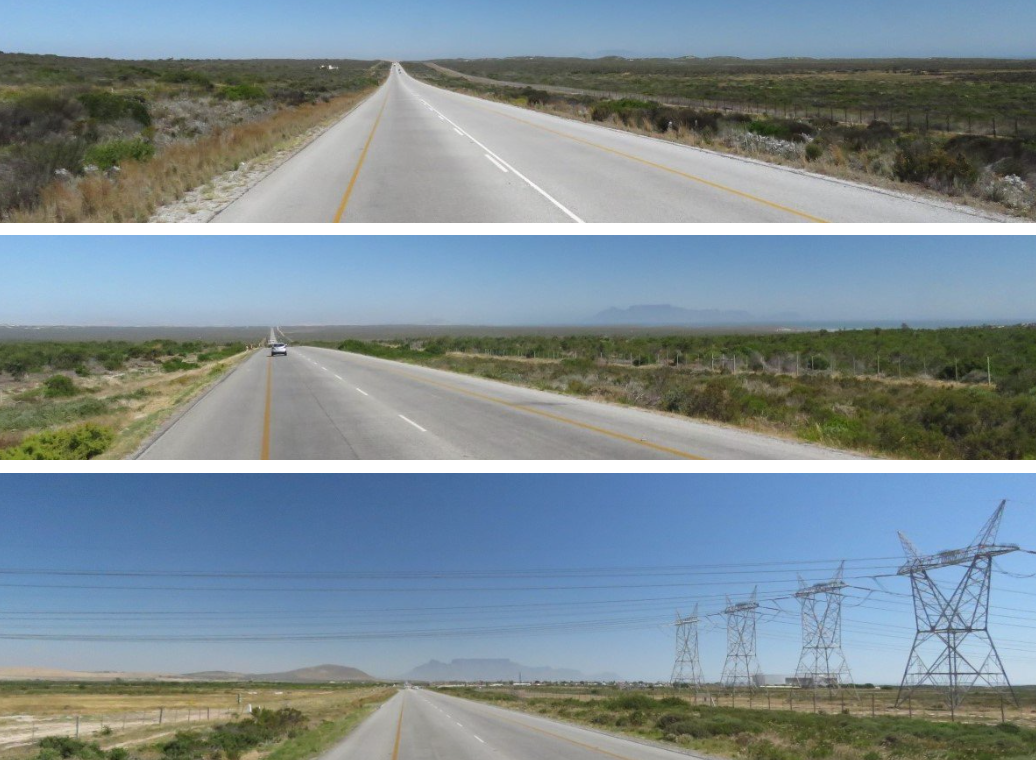
For more photos, clips and videos follow us on


West Coast National and Fossil Parks